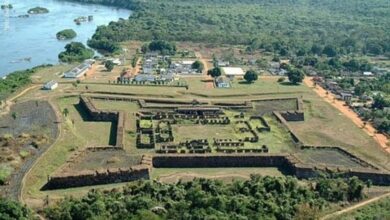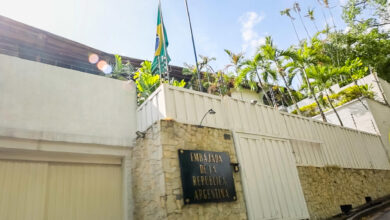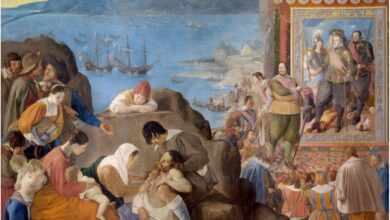Seizures of fake t-shirts throughout Latin America show that this turbulent business is booming

Last month, Colombian police launched an operation nationwide to combat contraband across the country, understanding that the upcoming soccer world cup represents a million-dollar business for fake t-shirt marketers. In this operation, more than 16,500 fake soccer jerseys were confiscated throughout the country, but the phenomenon is not limited to Colombia.
Leer en español: Camisetas de fútbol falsas: Así está el negocio a punto de iniciar el mundial
Similar operations in Peru have seized over 3,000 shirts in a single raid, and in Panama, the customs authorities are already alerted and trained by sportswear brands to identify fake products immediately.
The phenomenon is not limited to Latin America either. In Spain, in February of this year, 3,123 counterfeit t-shirts valued over 300,000 euros were seized. Which shows that, on a global scale, fake soccer jerseys are lucrative products to move through smuggling networks.
However, as always, on the eve of a soccer world cup, the manufacturers and dealers of these illegal products redouble their efforts to capitalize on the occasion. Two months before the 2014 World Cup, Chinese customs authorities confiscated nearly 520,000 fake sports goods with a market price of $ 266 million. In total, that year the Chinese government seized about 7 million counterfeit items related to the soccer world cup.
This year, the Chinese agency Xinhua reported that China Customs stopped a shipment with 4,000 counterfeit goods related to the World Cup in Russia.
Also read: Steam Summer Sale is coming, the solution to buy games without hurting your pocket
Losses for manufacturers and federations, the case of Nigeria
Among the most anticipated t-shirts in the world is Nigeria, inspired by the design used by the selection of this country during the 90s and manufactured by the Nike brand. The shirt has not yet been released and according to the Nigeria Football Federation has already received 3 million reserves, something that if true would break sales records for African teams, and that competes with the figures of some of the most great in Europe.
In comparison, Manchester United, the team with the most fans worldwide, sold just 2.8 million units of its equipment last year.
The date of launch of the shirt has not yet been confirmed, which has increased the expectation among fans of the super eagles. The lack of availability, added to the price of 90 dollars in its most basic version, has put it beyond the reach of the majority of the population of the country, the imitations, which are on sale since March, have boosted their sales.
The fake versions of the Nigeria shirt are sold in the streets of Lagos for prices around 30 dollars, barely a third of the price of the original.
The vice-president of the Federation of Soccer of Nigeria, Shehu Dikko, thinks that the enormous circulation of imitations becomes a great limitation for the organization at the time of negotiating contracts with manufacturers of equipment.
“It is difficult to negotiate a good contract when the people you negotiate with have to worry about counterfeits that are sold openly in the market,” says Dikko.
Although the shirt seems to have sold astronomical figures, it is inevitable to think that sales could have been much greater if not for the scale of the imitation market. However, Nike has not ruled on this.
Why do original t-shirts cost so much?
One of the biggest incentives for the widespread commercialization of fake soccer jerseys is the considerable price that they reach. The original shirts of the teams that participate in the World Cup are all around $ 90 dollars; however, the T-shirts of this price are replicas, made for fans and fundamentally different from those used by players. To have an equal to those that the idols of the selection wear is necessary to pay around $ 130 dollars.
This price puts the shirts above the purchasing power of many in some of the poorest countries that will participate in the tournament. To contextualize, the monthly salary in Senegal is $ 140 dollars, in Egypt it is $ 380 dollars, and in Peru it is around $ 590 dollars, which means that, frequently, accessing an original football shirt implies sacrificing a very significant portion of a person’s monthly income.
Of the $ 90 dollars that the final consumer pays for an original Nike or Adidas T-shirt, companies that sponsor 22 of the 32 competing selections, only $12 dollars corresponds to the cost of production. The rest corresponds to distribution costs, which add up between $ 30 and $ 35 dollars, and the profit margin of the brand, with which it pays the contracts with the football federations.
In the case of the selections, the manufacturers of the equipment pay the federation annually for the exclusive right of manufacturing, and these amount to millions. The most expensive contract of all, that of Germany with the Adidas brand, costs $ 60 million dollars per year.

Latin American Post | Pedro Bernal
Translated from “Camisetas de fútbol falsas: Así está el negocio a punto de iniciar el mundial”





